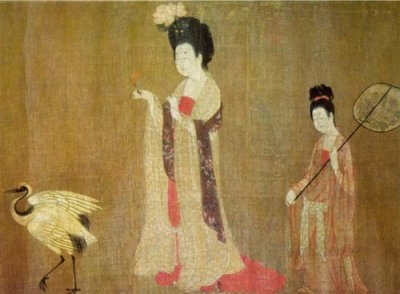Tang Dynasty Social Structure
 The Chinese Tang Dynasty, from 618 to 907, had a fairly rigid social structure. The population was divided into eight broad classes of social and political statuses with the imperial family at the apex of the pyramid.
The Chinese Tang Dynasty, from 618 to 907, had a fairly rigid social structure. The population was divided into eight broad classes of social and political statuses with the imperial family at the apex of the pyramid.
Aristocracy and Bureaucrats
Next came the aristocracy, whose power and influence waxed and waned according to the emperor in power. The aristocratic class was more influential in cases where it had itself provided the emperor; where the leader had emerged from an existing regal family they had less of a say.
Bureaucrats formed the next class, which was sometimes divided into two, with scholars and learned men being granted a higher status than mere functionaries.
Lower Classes
The sizable class of eunuchs, who acted as servants to the emperor and his household, formed a central class. Religious officials came next, with peasants following. Tang society was relatively unusual in that peasants were not considered the class of the lowest social status. Instead, the lowest free men were traders and artisans.
Slaves were not generally considered to have any social standing at all. Members of each class could easily be identified, since by law they were required to wear only the possessions and clothing that the emperor had decreed suitable for them. Punishments for breaking these laws could be severe.
Status of Women
During the Tang period, women were allowed a little more freedom than in the preceding eras. In particular, they were allowed to go into the priesthood for the first time. Even so, life did not change much for ordinary women; it was largely those who were already close to the centers of power who felt the effects of this change in official attitudes.
Courtesans were an accepted and respected part of Tang life, and their special status gave them access to debates usually only attended by aristocratic men. Moving up the social scale was not easy, but was possible to a slightly greater extent than in other periods thanks to the opening up of imperial examinations.
